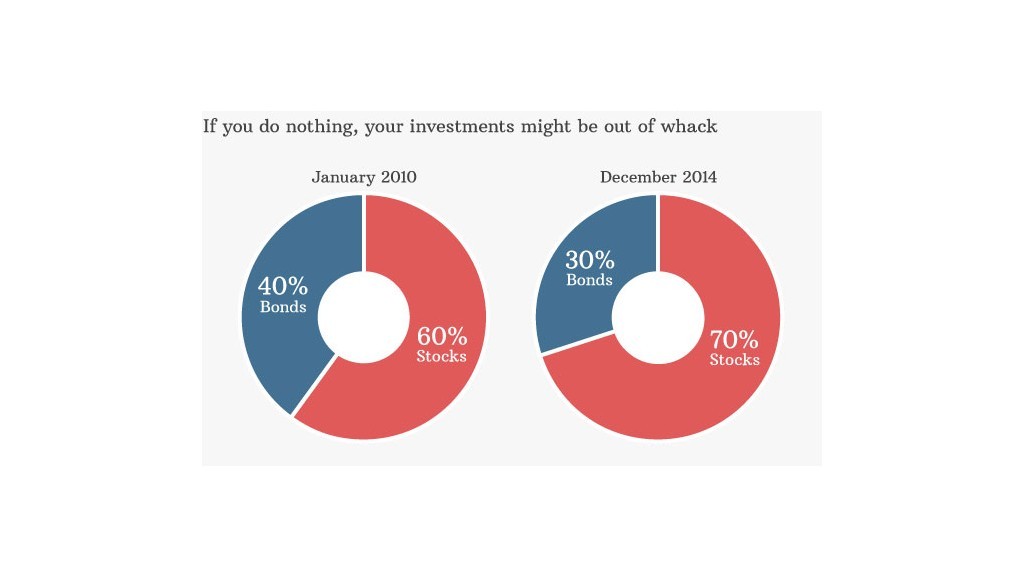The only funds you need in your portfolio now Dec 30 2014
Post on: 1 Апрель, 2015 No Comment

How many mutual funds do I need to have a diversified retirement portfolio? And what funds should they be? — E.F.
That’s nonsense.
The number of funds you own isn’t nearly as important as the types of securities your funds own. And if you choose funds that hold a broad range of stocks and bonds and work in synch with each other, you can put together a well-diversified portfolio with two or three funds, or in some cases, just one.
Of course, some advisers will suggest that you’re missing out unless you spread your money among all manner of exotic investments (which they’re more than happy to sell you ). But the more complicated your portfolio is, the more expensive and more prone to blow-ups it’s likely to be — which also increases the odds that it will generate subpar returns.
Which is why I suggest that as you review your investment strategy for the New Year and beyond, you consider a streamlined approach that allows you to get by with lower fees and fewer funds.
How few? Below you’ll find my recommendations for three simple but effective diversified retirement portfolios consisting of three funds or less.
THE THREE-FUND DIVERSIFIED PORTFOLIO
To create this portfolio, simply invest in the following three funds (or their ETF equivalents): a total U.S. stock market fund, a total international stock market fund and a total U.S bond market fund.
Do that, and you’ll gain exposure to virtually every type of publicly traded stock in the world (large and small, growth and value, domestic and foreign, all industries and sectors), as well as the entire U.S. investment-grade taxable bond market (short- to long-term maturities, corporates, Treasuries and mortgage-backed issues).
You can buy such funds and ETFs directly from any number of investment firms, including biggies like Fidelity, Schwab and Vanguard, all of which sell their own funds and ETFs or those of other firms, such as iShares, or both. If you’re working with an adviser. he or she can buy these funds on your behalf.
The annual fee you’ll pay will vary depending on which firm’s funds or ETFs you choose. (If you go with ETFs, you may also incur a brokerage charge, although several firms are currently waiving commissions and transaction fees on at least some ETFs.)
But you should easily be able to assemble a portfolio for an annual fee of 0.20%, or $20 per $10,000 invested, if not less. If you invest through an adviser, he or she will charge a separate fee.
THE TWO-FUND DIVERSIFIED PORTFOLIO
This portfolio is identical to the one above, except for one difference: it skips the total international stock fund.
Some pros may argue that jettisoning foreign stocks makes no sense, especially since we live in such a global world. But others, including Vanguard founder and low-fee zealot Jack Bogle. argue that you can get along fine without international shares.
I’m agnostic on this issue. Diversifying internationally should typically make your portfolio a bit less volatile since foreign markets don’t always move in synch with U.S. stocks. But holding foreign shares isn’t likely to offer shelter during major meltdowns, as virtually all markets move together in times of extreme duress.

If for whatever reason you’re antsy about owning foreign shares or you just like to keep it simple by sticking to domestic equities, I don’t think going with a USA-all-the-way portfolio is going to interfere with you achieving your goals.
THE ONE-FUND DIVERSIFIED PORTFOLIO
If you really don’t want to be bothered putting together a portfolio, then a target-date retirement fund may be the solution. You choose a fund with a target year that roughly corresponds to the year you plan to retire (2015, 2020, 2025, whatever) and you get a ready-made mix of domestic and foreign stock and bond funds suitable for someone your age.
What’s more, the fund automatically follows a glide path, shifting into bonds each year and becoming more conservative as you approach and enter retirement.
You may end up paying a slightly higher annual fee for this portfolio-in-a-fund than you would by putting together the two- or three-fund portfolio option above. But you should easily be able to keep your annual expenses below 1% a year. And if you go for an all-index-fund target fund like Vanguard’s, you’ll pay less than 0.20% annually.
If you go with the two- or three-fund portfolio, you’ll also have to decide how to divvy up your money between stocks and bonds. That’s largely a matter of balancing your appetite for risk (which you can determine by completing a risk tolerance questionnaire ) against the size returns you’ll need to build an adequate nest egg or, if you’re already retired, assure that your savings will sustain you throughout retirement. By plugging different blends of stocks and bonds (as well as different spending rates) into this retirement income calculator. you can get a good sense of which mix is right for you.
Since stocks and bonds typically don’t deliver identical returns from year to year, you may have to rebalance your two- or three-fund portfolio to restore it to the right mix. Every few years or so, you may also want to reassess your risk tolerance and goals, just to make sure you’re still okay with whatever stocks-bonds mix you originally set.
But aside from this sort of routine maintenance, you really don’t need to do much with any of these portfolios. Just sit back and reap the benefits of the broad diversification each has to offer.
Walter Updegrave is the editor of RealDealRetirement.com . If you have a question on retirement or investing that you would like Walter to answer online, send it to him at walter@realdealretirement.com .














